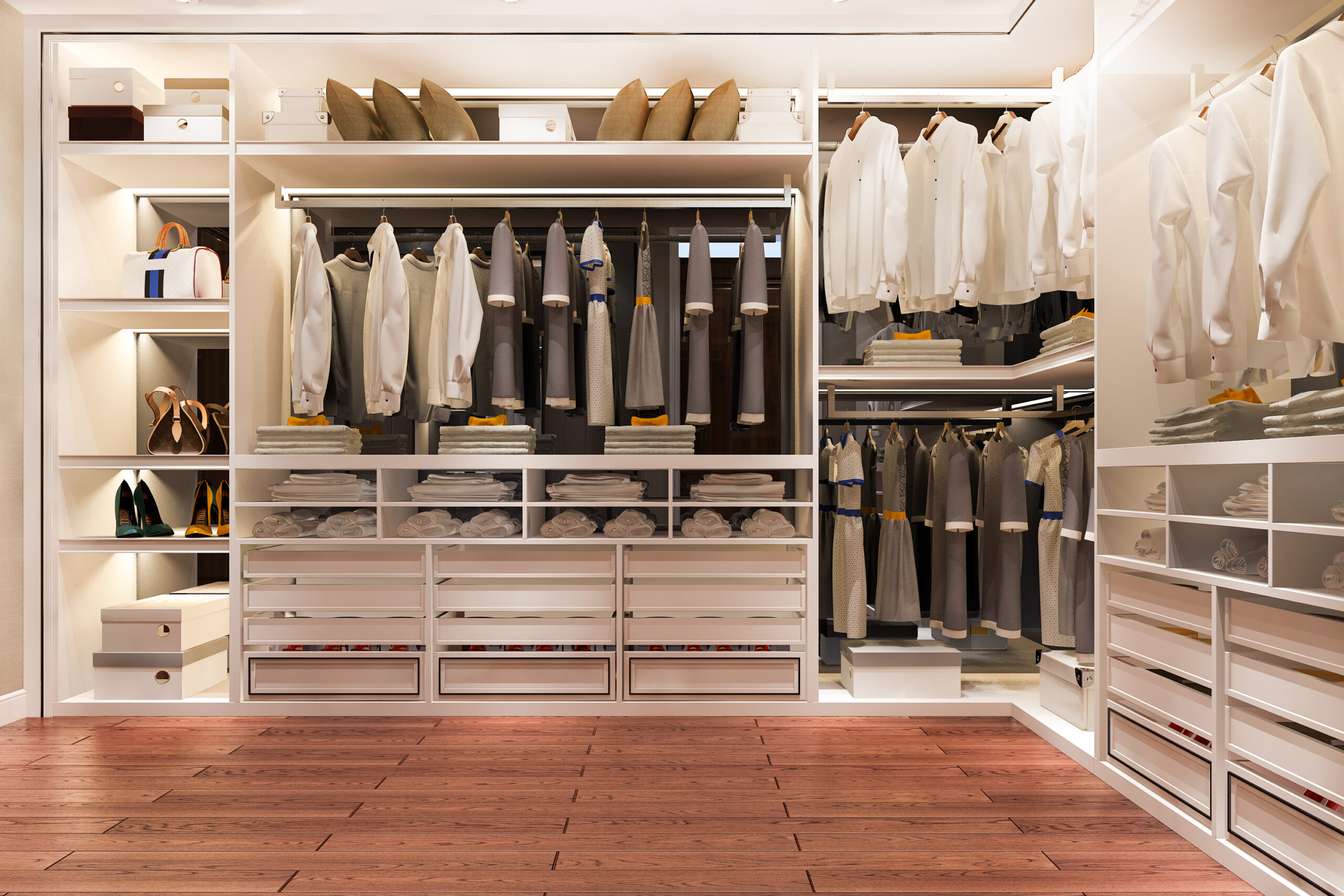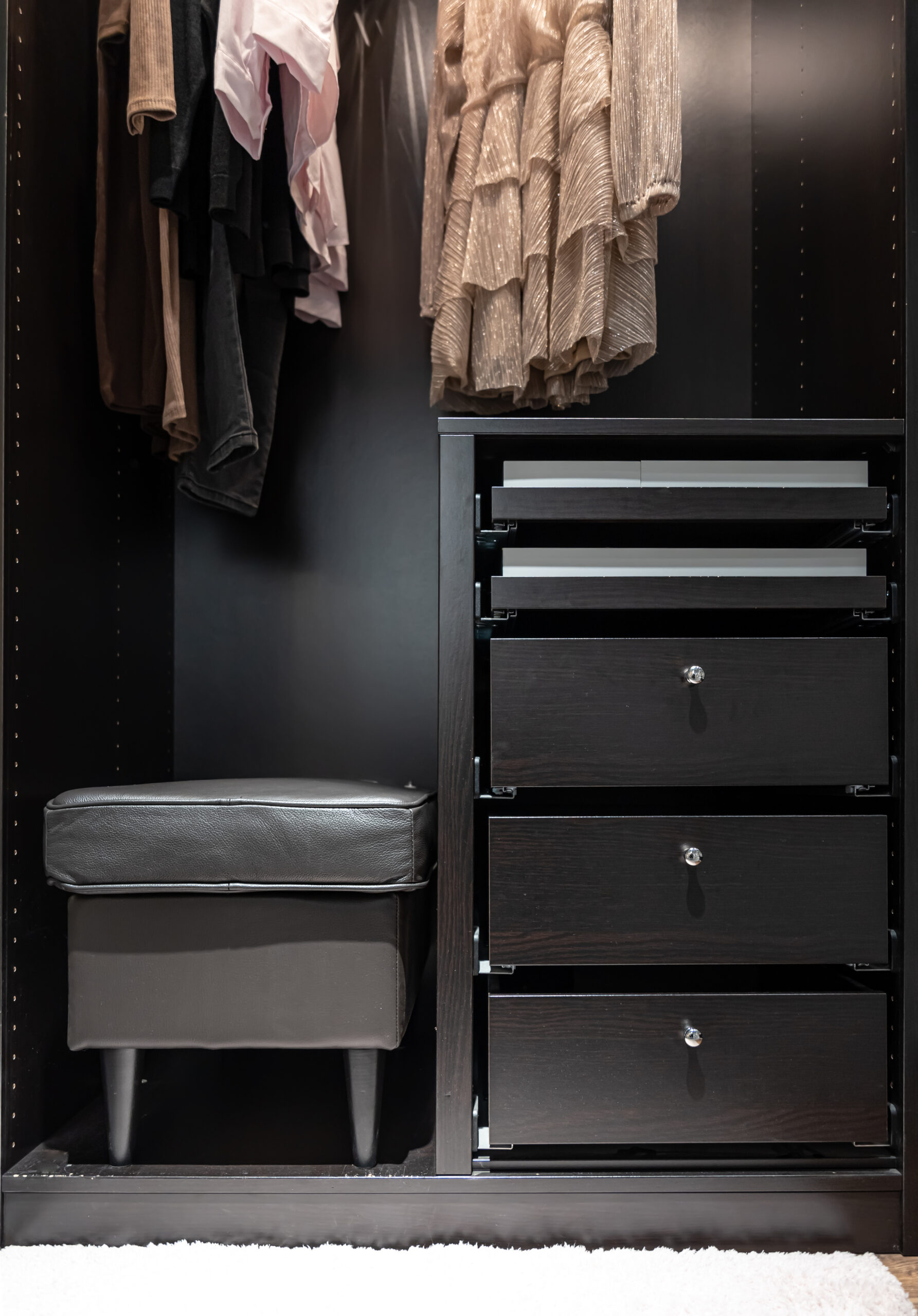DISCOUNTS ARE IN BLOOM! 30% OFF ALL CLOSETS!
Ciri Blog

Big Solutions for Small Spaces: Organized Living with Modular Closet Systems
Introduction to Modular Closet Systems
In recent years, modular closet systems have emerged as a practical solution for efficiently utilizing space in small living environments. These innovative systems consist of a series of adjustable components designed to work together seamlessly. Each element can be tailored to fit the specific dimensions and needs of the space, offering a high degree of customization and flexibility. Whether you are renting a compact apartment or looking to organize a cozy home office, modular closet systems provide the ideal framework for a tidy and functional area.
One of the primary advantages of modular closet systems is their adaptability. Users can choose from various components—such as shelves, racks, and drawers—that can be reconfigured as needed. This means that as your storage requirements change over time, your closet can evolve with you. For instance, a growing wardrobe can easily be accommodated with additional shelves and hanging rods. This flexibility is particularly valuable in small spaces where traditional closet solutions may fall short.
Moreover, the organization plays a crucial role in maximizing the efficiency of limited space. A well-designed modular closet system allows you to categorize and arrange your belongings thoughtfully. This enhances accessibility and minimizes clutter, ultimately leading to a more serene living environment. By implementing such systems, individuals can reclaim valuable space that would otherwise be underutilized or overcrowded.
In essence, modular closet systems represent a forward-thinking approach to organization that holds tremendous potential for small spaces. Their customizable nature, coupled with their ability to enhance organizational efficiency, establishes them as an essential tool for achieving an organized living area. This introduction sets the stage for further exploration into how modular solutions can revolutionize the way we manage and enjoy our smaller spaces.
The Benefits of Modular Closet Systems
Modular closet systems present numerous advantages over traditional storage solutions, particularly when it comes to optimizing living spaces. One of the standout benefits lies in their ability to maximize vertical space. Standard closets often offer limited shelf heights and static layouts, which can prevent effective utilization of all available space. In contrast, modular systems are designed to be adjustable; they allow users to customize configurations to suit their specific storage needs. By leveraging vertical space, individuals can store more items without sacrificing the room’s overall aesthetics.
Another significant benefit of modular closet systems is enhanced accessibility. These systems can be tailored to place frequently used items at eye level, while less commonly accessed belongings can be positioned higher or lower. This organization promotes easy access while also reducing time spent rummaging for items. Furthermore, many modular solutions incorporate features such as pull-out drawers and integrated lighting, which further improve visibility and convenience. The streamlined accessibility not only makes daily routines more efficient but also encourages better habits, as users are more likely to return items to their designated spots.
The psychological implications of organized living spaces cannot be overlooked. Studies indicate that a cluttered environment can lead to heightened stress levels and decreased productivity. Conversely, a well-organized closet, facilitated by a modular system, fosters a sense of calm and control. For instance, individuals transitioning to remote work have reported an uptick in productivity after decluttering their workspaces, which includes organizational improvements within their closets. Overall, modular closet systems not only enhance physical space but also contribute to mental well-being, leading to a more harmonious living environment. By addressing the needs of modern life, these systems provide a practical and aesthetically pleasing solution to storage challenges.
Choosing the Right Modular Closet System
When it comes to maximizing organization in limited spaces, selecting the appropriate modular closet system is a vital step. This process begins by accurately assessing the dimensions of the available area. Measure the height, width, and depth of the space where the modular closet will reside. These measurements are crucial in determining which system will fit perfectly and make optimal use of vertical and horizontal space.
Another essential consideration revolves around personal style preferences. Modular closet systems are available in various designs, colors, and finishes, allowing homeowners to select options that align with their existing décor. Whether a modern, minimalist design or a classic, traditional look appeals more, having a harmonious aesthetic is beneficial, as it transforms the closet from a mere storage area into an integral part of the room.
Next, it is imperative to evaluate specific storage requirements. Consider the types of items that will be stored in the modular closet system. For clothing, assess the need for hanging rods, shelves, and shoe racks. For accessories, incorporate compartments or bins to prevent clutter. A well-thought-out layout that accommodates all belongings will contribute significantly to the efficiency of the system.
Budget constraints play a critical role in the decision-making process. Modular closet systems range widely in price based on materials, functionality, and brand. It is advisable to set a budget beforehand to assist in narrowing options without compromising quality. Investing in durable materials ensures longevity and value for money, as cheaper alternatives may require more frequent replacement. Prioritize solid construction and resilient finishes to experience long-term satisfaction with the chosen system.
Lastly, assessing personal belongings is pivotal. Decluttering before making a purchase decision gives a clear idea of what to include or remove from the closet system. By taking the time to evaluate dimensions, style preferences, storage needs, and budget, one can confidently choose a modular closet system that enhances both organization and aesthetics within the space.
Designing Your Modular Closet Layout
Creating an efficient modular closet layout is essential for maximizing functionality and utilizing small spaces effectively. The first step in this process is assessing the specific items you plan to store. This includes clothing, accessories, shoes, and any additional storage needs you might have. A well-organized closet takes these factors into account to ensure that each item has a designated place, making your daily routines more streamlined.
Once you have identified your storage requirements, consider the flow within the closet space. It is important to ensure that the layout allows for easy access to frequently used items while minimizing clutter. Modular closet systems provide unparalleled flexibility, permitting you to customize shelves, drawers, and hanging spaces based on your unique needs. For example, placing frequently accessed clothing at eye level while utilizing higher shelves for off-season items can significantly enhance usability.
Visual aids can play a pivotal role in this design process. Utilizing software tools or sketching out different layout options can help you visualize how each module interacts with the overall space. Look for examples of well-designed modular closet layouts online or in magazines for inspiration. Pay attention to how these designs incorporate lighting and textures, as these elements can not only make the space more functional but also visually appealing.
When selecting modular components, consider the material and style that best match your room’s aesthetic and will complement your personal style. Balancing functionality with design can yield a beautiful, organized space that meets all your needs. By thoughtfully planning your modular closet layout, you will create a harmonious environment that transforms an ordinary space into an extraordinary one.
Maximizing Storage Efficiency: Tips and Tricks
In the quest for organized living within the confines of small spaces, modular closet systems emerge as a practical solution. Central to their effectiveness is the ability to maximize storage efficiency. One of the foremost strategies involves utilizing vertical space, which is often underutilized in traditional closet setups. By installing shelving units that extend from floor to ceiling, homeowners can take advantage of this verticality, allowing for the storage of items that would otherwise contribute to clutter. Incorporating adjustable shelves can accommodate seasonal items, making retrieval convenient and organized.
Dividers are another ingenious tool in promoting order within modular closet systems. By segmenting shelves or sections of drawers, users can create specific areas for different types of clothing or accessories. This not only aids in maintaining organization but also simplifies the process of selecting outfits. For instance, a section dedicated to scarves, belts, or ties can prevent these accessories from becoming a jumbled mess.
Moreover, the inclusion of baskets within the modular design allows for both aesthetic appeal and functionality. Baskets can serve as catch-alls for smaller items such as shoes, hats, or even seasonal clothing. They can be easily labeled, enabling quick identification of content, which enhances the overall efficiency of the storage system.
Selecting multi-functional pieces further boosts the usability of small spaces. Consider a storage ottoman that can double as seating or a small bench with built-in storage. Such designs not only save space but also add utility to the room. A real-life example includes a homeowner who transformed a cramped closet by implementing these tips, leading to a neat and accessible environment. Their successful reorganization stood as a testament to the possibilities offered by modular closet systems.
By embracing these strategies, individuals can efficiently maximize storage in their modular closet systems, turning small spaces into organized havens that reflect both practicality and style.
Maintaining an Organized Closet: Best Practices
Maintaining an organized closet is pivotal for maximizing the efficiency and functionality of any modular closet system. To achieve enduring organization, one must adopt certain best practices that facilitate a systematic approach to closet management. A central practice is seasonal decluttering. That entails evaluating the contents of your closet at the change of each season. This provides a timely opportunity to reassess what items are essential and which can be discarded, donated, or recycled. By regularly eliminating items that no longer serve a purpose, you create additional space and make room for new necessities that align with your current lifestyle.
Another essential practice is conducting regular inventory checks. This process involves reviewing the items stored in your modular closet system to ensure that everything is in its designated place. Categorizing items by type, season, or frequency of use can facilitate quick access and efficiency. Keeping a list of what you own can also prevent the acquisition of duplicate items, further contributing to organization. It is advisable to schedule these checks, perhaps on a monthly or quarterly basis, to embed them into your routine.
Equally important is the flexibility to adapt your closet system as your needs change. Life events, such as moving to a new home, a career shift, or lifestyle transitions, often necessitate a reassessment of your storage needs. Modular closet systems provide the versatility to modify configurations and incorporate new storage solutions seamlessly. By being attentive to these changes, you can ensure your closet remains both functional and organized.
Lastly, establishing consistent habits is crucial for long-term success. Simple routines, such as putting items back in their designated spots after use or allocating time for weekly tidying, reinforce the principles of organization. Through dedicated adherence to these practices, one can maintain an efficient and organized closet that truly enhances daily living.
DIY vs. Professional Installation of Modular Closet Systems
When considering modular closet systems, one essential decision revolves around the method of installation: DIY or professional. Each option presents distinct advantages and potential challenges that can significantly influence the outcome of your closet project. Understanding these factors is crucial for making an informed choice tailored to your specific skills and preferences.
Embarking on a DIY installation may appeal to those with a penchant for home improvement and a desire to save on costs. A successful DIY project typically requires a solid grasp of carpentry skills, as well as familiarity with tools such as drills, saws, and levelers. Additionally, a well-thought-out plan is essential, including measurements and a clear design layout to ensure that the modular closet systems fit perfectly within the designated space. However, despite these benefits, DIY installations can present unexpected challenges, particularly if one lacks experience or if issues arise during assembly.
On the other hand, hiring a professional offers a range of benefits that can enhance the overall experience. Professionals bring expertise and specialized knowledge, ensuring that the modular closet systems are efficiently and correctly installed. This proficiency can save time, alleviating the stress associated with navigating potential obstacles during installation. Furthermore, many professional services offer warranty options on installations, providing peace of mind regarding the longevity and quality of the work performed.
Ultimately, the decision between DIY installation and hiring professionals will depend on individual preferences, skill levels, and the complexity of the modular closet systems. Whether you choose to take the DIY route or enlist expert help, understanding these elements will facilitate a smoother transition to an organized living space that meets your needs.
Success Stories: Real-Life Transformations
Modular closet systems have emerged as a popular solution for individuals and families seeking to optimize their living spaces. Many have shared inspiring success stories detailing their journeys toward creating more organized and efficient small spaces. For instance, the Johnson family, residing in a modest 1,200-square-foot home, faced challenges with clutter and disorganization, particularly in their children’s shared bedroom. With limited space for toys, clothing, and school supplies, the chaos was overwhelming. After implementing a modular closet system tailored to their unique needs, the transformation was remarkable. The before-and-after images reveal a room that went from chaotic to charmingly organized, allowing the children to easily find their belongings and even create more play space.
Another compelling story is that of a young professional living in a studio apartment. Initially, the lack of defined areas made it difficult to maintain order amidst daily routines. The installation of a modular closet in the entryway redefined the space, allowing for curated storage of shoes, bags, and outdoor gear. The addition of vertical shelving maximized the limited wall space, creating a more functional living area. This change not only improved the aesthetic appeal of the apartment but significantly enhanced the resident’s daily productivity. A testimonial noted, “Not only did I gain more space, but I also feel a renewed sense of calm and focus now that everything has its place.”
Many have found that modular closet systems do more than just organize; they also contribute positively to mental well-being and lifestyle changes. Families can now enjoy their small spaces without the stress of clutter. As these stories illustrate, the impact of a well-organized environment can be profound, enhancing both functionality and quality of life. With so many versatile options available, it’s no wonder that modular closet systems continue to be a go-to solution for small space living.
Future Trends in Modular Closet Systems
The landscape of modular closet systems is evolving rapidly, driven by advancements in technology and a growing awareness of sustainability. One of the most significant trends is the integration of smart technologies into these systems. Manufacturers are increasingly incorporating features such as automatic lighting, temperature sensors, and Bluetooth connectivity, allowing users to control their spaces with their smartphones. This innovation not only enhances the functionality of modular closet systems but also contributes to improved accessibility and personalization in small spaces. Residents can now customize their closet systems to adapt to their specific habits and needs, leading to more organized and efficient living environments.
Another prominent trend involves the use of sustainable materials in the production of modular closet systems. With an increasing emphasis on environmentally friendly practices, manufacturers are shifting towards recycled or responsibly sourced materials. This change not only minimizes the environmental footprint associated with closet construction but also appeals to eco-conscious consumers looking for stylish yet sustainable solutions. As consumers become more aware of their choices and their impact on the planet, the demand for modular closet solutions that utilize eco-friendly materials is likely to rise.
Adaptability is a further key consideration in the evolution of modular closet systems. As urban living spaces shrink, the need for flexible designs that can change with inhabitants’ lifestyles grows. This has led to an emphasis on modular systems that can be easily expanded or reconfigured. New designs allow users to start with a basic structure and add elements as their storage needs change over time. The blend of smart technology, sustainability, and adaptability will play a crucial role in shaping the future of modular closet solutions, making them essential tools for anyone aiming to maximize organization in small spaces. Through these innovations, individuals are not only optimizing their storage solutions but also enhancing their overall living experience.
Devon Lane

- Genel (16)
- Home Improvement (3)
- Reinvent Your Wardrobe with Modular Shelving Systems 08/26/2025
- Create Your Own Dressing Room: Walk-In Closet Ideas and Inspiration 08/18/2025
- Big Solutions for Small Spaces: Organized Living with Modular Closet Systems 08/10/2025
- 5 Easy Cabinet Assembly Tips for Hassle-Free Pi Closets Installation 08/02/2025
- 10 Genius Shoe Storage Solutions: Try a Shoe Cabinet with Drawers 07/25/2025






